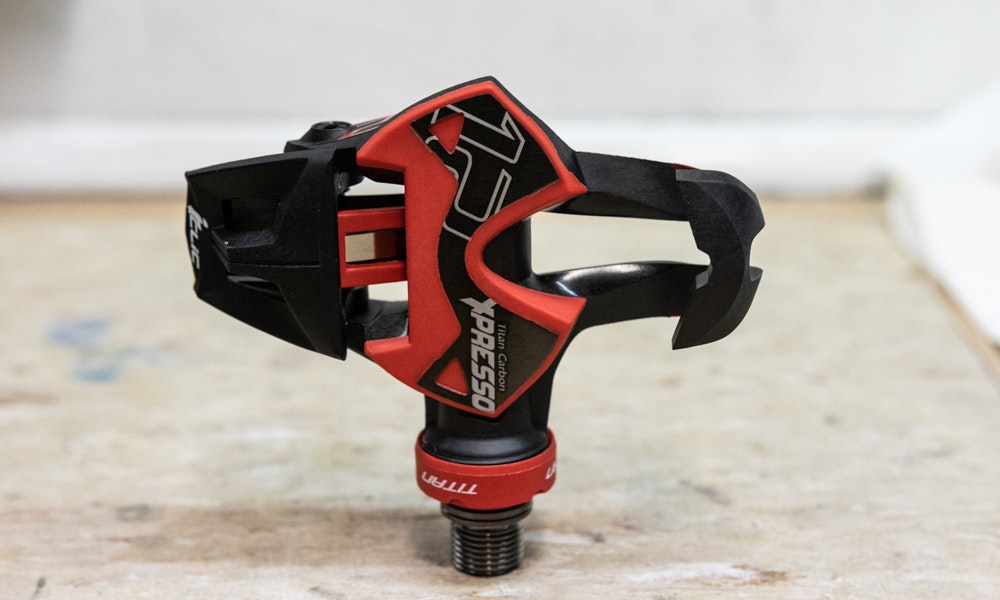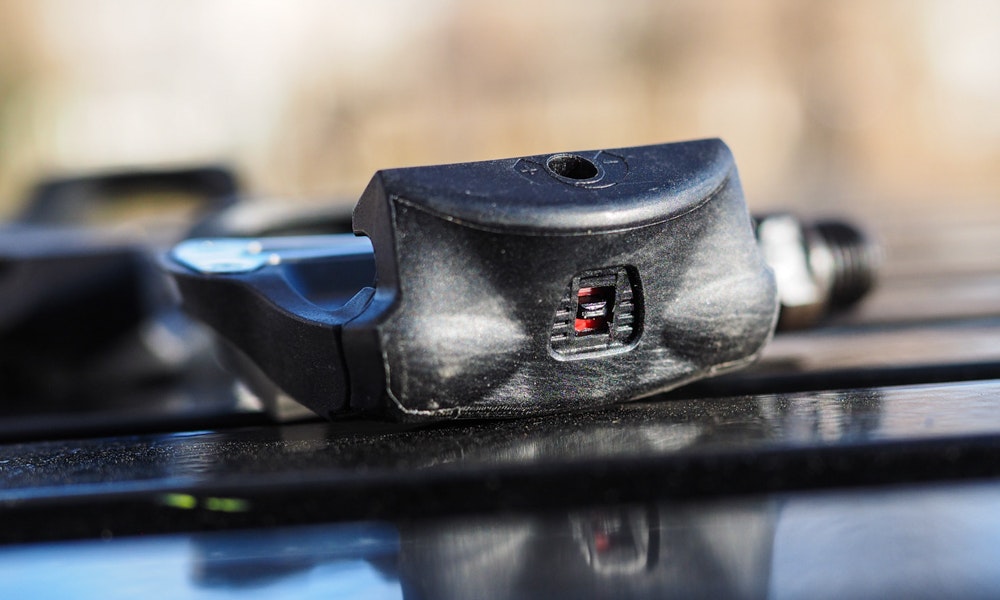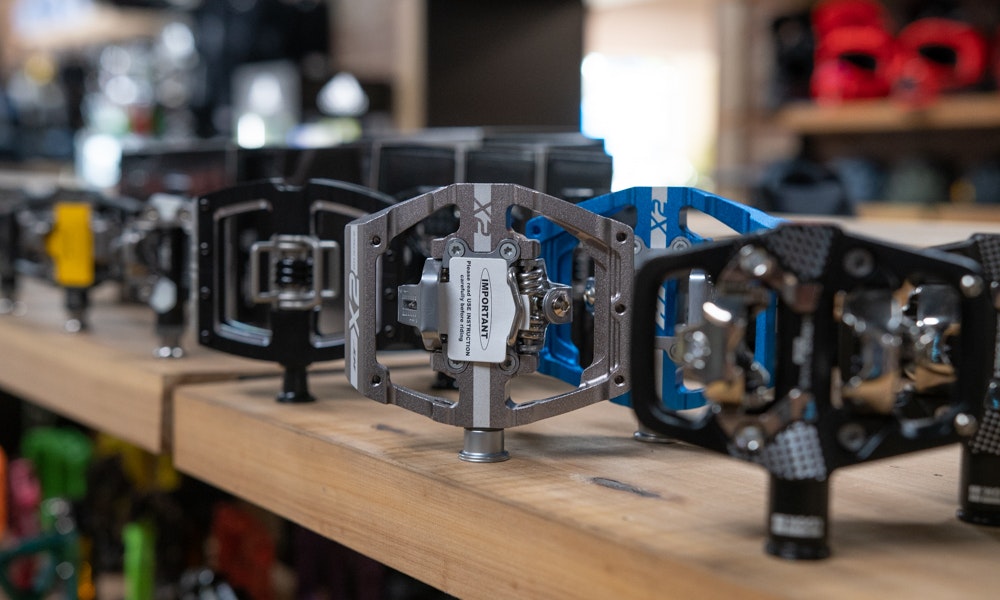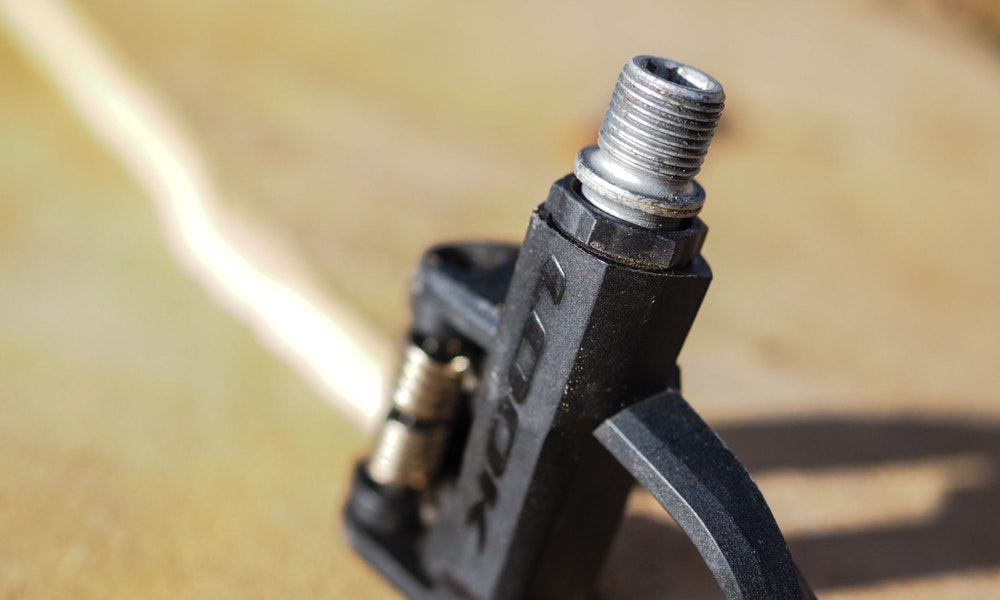Attached to the cranks and responsible for transferring the power from your legs through to the drivetrain, pedals are an integral component on any bicycle. Often overlooked, these complex components can have a large impact on your performance, comfort and safety on the bike.
More than a simple platform to rest your feet on, matching the right bicycle pedals to your riding style can allow you to get the most out of your bike. So regardless of whether you’re looking to clip-in, strap-in or step on, join us as we take you through everything you need to know about bicycle pedals.
Short on time? See below for quick links to each relevant section
What are Bicycle Pedals

Sold as a pair, bicycle pedals thread into the crank arms and are the point of contact used to propel a bike forward, after all, a bike without pedals is nothing more than a fancy scooter.
Bicycle pedals will typically come in three distinct styles; clip, clipless, or platform. We’ll describe the difference between the three below, however, each different style has it’s advantages and can make a large impact on your riding experience. These advantages include increased power transfer, greater stability, increased comfort and ease of use.
Clipless Vs Platform (Flat) Vs Clip
As stated above, three major categories of pedals exist - clipless, platform and clip. Below we’ll give you a basic overview of each style, their intended use and what styles of riding they are best suited to.
Clipless

Used in conjunction with cycling shoes which hold the “cleat”, clipless pedals allow you to mechanically attach your foot to the pedal, not unlike a ski binding system. The advantage of being mechanically attached to the pedal is it allows for increased pedaling efficiency, easier power transfer and an ensured hold without the risk of your foot slipping off.
Clipless pedals are confusingly named as such as they are free from the old-fashioned “toe clips” and are the common choice for road bikes, mountain bikes and higher-end commuter bikes. Due to the attached nature of the system, more often than not, they involve a slight learning curve as it’s possible to topple over while still attached to the bike... don’t worry we’ve all been there.
Clipless pedals are typically split into two categories: mountain bike pedals and road pedals. Mountain bike clipless pedals use a two-hole cleat, feature two or more sides and are designed to shed mud more efficiently than their road going siblings. Due to the smaller cleat, shoes designed for mountain bike pedals are easier to walk in and so make a better choice for commuters and recreational cyclists too.
Road bike pedals typically use a three or four-hole cleat, are often one-sided and built with a larger surface area for greater power transfer. The larger cleat can be awkward to walk in, however, specialised cleat covers and accessories are available for riders planning on doing a little more walking over the course of their ride
Platform

Commonly found on BMX, urban, recreational and/or mountain bikes, platform pedals let you simply step on and start riding. These are the easiest type of pedal to use and do not call for any special technique or shoe when it comes to putting the foot on or off the pedal. More expensive platform pedals offer greater strength, better bearings and better traction.
Clip
Toe clip pedals attach the foot to the pedal via a cage and strap. Now considered a largely outdated and less popular option to clipless pedals, toe clip pedals still allow the foot to be attached to the bike without the need for special cycling shoes. Toe clip pedals are considered less safe than clipless versions given that the shoe can become trapped in emergencies. For this reason, toe clip pedals are not recommended for mountain biking, with the majority of clip pedals being found on commuter bikes or indoor fitness bikes.
Pedals for Specific Disciplines
Now that we’ve given you an overview of the different pedal styles on offer, we’ll dive a little deeper into category-specific pedals and explain the different closure mechanisms at play and how they benefit that particular style of riding.
Road Bike Pedals

Modern road bike pedals have evolved over the years into sophisticated components. Dedicated road bike pedals are of the clipless variety and aim to offer increased pedalling efficiency, a secure hold and greater power transfer. Between brands and price points, there are subtle differences in binding systems, stability, float and durability.
- Look
Look were the first manufacturer to introduce the clipless pedal style to the mass market back in 1983, with the original Delta cleat and closure system remaining largely unchanged for over 20 years. The Keo cleat and closure system replaced the Delta and is still used by the iconic French company today.
Whilst Look clipless pedals have been continuously refined over the last 30 years, little has changed in the core functionality of the pedal since it was first introduced to the market.

The Keo is available in two distinct styles. The standard Keo, which uses a spring mechanism to hold the cleat in place, and the Keo Blade, which uses a carbon leaf spring in place of a wound spring to hold the cleat in place. As a result of the leaf spring design, the Keo Blade saves over 95g when compared to its more traditional stablemate.
The Keo is available with three different cleat types, each offering a different level of float (more on this later) including; 0º (Black), 4.5º (Grey), and 9º (Red).
- Shimano
Standing for Shimano Pedalling Dynamics, industry giants Shimano are yet another long-term player in the clipless pedal game with its road specific SPD-SL pedals. SPD-SL’s are arguably the most popular clipless road bike pedal on the market today, thanks largely to the fact that they just work. Reliable, durable, functional, affordable and readily available, there are few down points to the SPD-SL clipless pedal system.

There are a number of different iterations of the SPD-SL pedal available, each corresponding with a groupset. This begins with the entry-level R-550, constructed from carbon composite and steel, right they way up to a Dura-Ace model, that makes use of a carbon fibre body, weight relieved bearings and spindles, and a more durable pedal body.
Much like the Look system, Shimano also offers a choice of cleats to change the amount of lateral movement or float on offer. These include; 0º (Red), 3º (Blue), and 6º (Yellow). The majority of Shimano pedals ship with yellow cleats as standard, however, the option exists to fine tune the float by changing up the cleat.
- Time
French carbon fibre specialists Time has been offering its popular XPro and XPresso clipless pedal platform to the market for over 20 years. Favoured by riders thanks to their low stack height, impressively low weight and stable cleat platform, Time pedals have continued to be refined over the years.

Time has by far the largest variance of pedal options compared to its road-going rivals on this list, with three different iterations of the XPro, and seven different XPresso pedals on offer. The XPro is the latest pedal to join the French company’s product line-up and features a larger pedal surface for increased power transfer, the same low stack height and a slightly different cleat engagement leaf spring mechanism, said to increase comfort.
The entire XPro and XPresso range make use of a carbon fibre body, a 13.5mm stack height and up to 15º of float.
- Speedplay
American company Speedplay take a completely different approach to the clipless pedal design than the brands listed here. Speedplay places the spring mechanism in the cleat, with the pedal itself serving as the fixed portion of the binding system. Doing it this way affords Speedplay to offer dual-sided entry without a cost to cornering clearance.

Many Speedplay users favour the modern aesthetics and low weight, ranging from 210g down to a feathery 130g, that such a minimalist pedal design provides. Unlike the other pedals on this list, the float for the pedal is a consistent 15º across the range, with the only changes between cleats being either 3-hole or 4-hole mounting. The company also offers a "walkable" cleat which features a rubber surface.
Stack, Float and Spindle Length Explained

The stack, float and spindle length are commonly mentioned when discussing road bike pedals.
The stack of a pedal refers to its height or thickness. Traditionally, riders have tended to favour a pedal with a lower stack height due to the more natural ankle and knee flex it provides. Pedals with a low stack height have also been claimed to provide increased stability.
Float is the degree to which the pedal design allows the foot to pivot on the horizontal plane while engaged on the pedals, and allows the knee to track naturally during the pedaling motion. Riders with troublesome knees often seek out pedals that have a higher degree of float (6º to 15º), Time and Speedplay are perfect examples of this.
The spindle length, commonly known as the axle length, refers to the length between the pedal body and the crank arm. Some pedals such as current Shimano Dura-Ace R9100, Shimano Ultegra R8000, and SpeedPlay pedals have begun to offer pedals with an option of increased spindle length to aid in patella (knee cap) tracking.
Mountain Bike Pedals

Mountain bike pedals differ from their road-going siblings in two different options share equal popularity. These include the clipless style and platform style. There is also a third, less popular option, known as a combination pedal, which aims to combine the clipless and platform pedal into one (this third option is covered in the commuter section below).
Mountain Bike Clipless Pedals
The main considerations when selecting a mountain bike pedal will typically include the weight, level of engagement, mud-shedding properties and in the case of clipless pedals, how much float is on offer. As more movement is typically required when tackling technical off-road terrain, clipless mountain bike pedals will typically differ quite a lot from their road-going siblings, including more float, double-sided entry and more robust construction. Cross-country clipless pedals offer a minimalist design with lower weight, increased pedalling stability and greater mud shedding. Whereas a trail or gravity clipless pedals will typically feature a surrounding platform cage, designed to protect the pedal's clipless mechanism from rock strikes while adding in traction and foot support when not clipped it.

For off-road riders, mud shedding ability is particularly important. Pedals that quickly become clogged with mud, dirt and grime will make it difficult for riders to clip in and out quickly. For this reason, there are a vast number of different manufacturers to consider when selecting clipless mountain bike pedals. The most popular options include Crank Brothers, Time, Look and Shimano. Shimano's SPD system is, without doubt, the market leader, and is well-loved for its adjustable spring tension, hard wearing cleats and long-lasting bearings, Pedals from Crank Brothers are commonly considered the best for mud clearing, but the simple design doesn't offer spring tension adjustment.
Mountain bike flat pedals

Mountain bike specific platform pedals have enjoyed a boost in popularity in recent years, particularly with the downhill, all-mountain, enduro and trail bike crowds. This boost in popularity is largely thanks to the ability to quickly react with a foot down in the event of a tyre drifting, or if needed, bail from a bike if something goes wrong. Flat pedals designed for mountain biking are tough metal platforms with multiple spikes or pins for extra grip and are used in conjunction with more casual skate-style shoes with soft rubber outsoles and a reinforced midsole for greater pedalling efficiency.
More expensive flat pedals will use exotic materials such as magnesium or titanium to shed weight and often feature replaceable and adjustable "pins" so grip can be customised. Some pedals will feature grease ports to enable the bearings to be lubricated without the need for the pedal to be dismantled, while more premium options will typically use longer-lasting sealed bearings. The latest mountain bike platform pedals also aim to reduce stack height, which improves ground clearance and bike control – however, do be warned that many super low stack platform pedals suffer from poor bearing durability.
Commuter Pedals
Adorning the large majority of hybrid, commuter and urban bikes available on the market, flat pedals are by far the most popular option when it comes to propelling recreational riders and short distance commuters. This is largely thanks to the fact they do not require the rider to have dedicated cycling specific shoes.

For commuters wanting a little more pedaling efficiency, a combination pedal is worth considering. Combination pedals typically offer a mountain bike clipless pedal on one side, with a platform pedal surface on the opposite side. This allows riders the ability to clip in when desired and also ride in normal shoes for short trips.
These pedals will typically pair best with a dedicated commuting or mountain bike shoe, which features a recessed section in the sole for the cleat to sit in. This improves the walkability of the shoe, and in the case of commuting shoes, allows them to take on a more casual aesthetic.
BMX Pedals
BMX pedals are much like mountain bike flat pedals, but are often even more simplistic and built robustly to take plenty of abuse. Manufactured from either resin, aluminium or steel, BMX pedals will usually be much heavier, yet much more affordable than other platform pedals.
Many BMX pedals will run a single bearing and bush with a minimal amount of gripper pins on the platform. Whilst they may look similar to mountain bike pedals, be careful to watch for different axle standards between the two different styles, with many kids-specific BMX pedals featuring a smaller thread diameter.
Spares and Maintenance Tips

Much like any other component on your bicycle, pedals will typically require maintenance to ensure they are performing at their best. The most basic form of maintenance you can perform is a regular inspection of your cleats and the pedal surface itself. The cleaner your pedals are, the easier it is for the cleat to contact the pedal body, thus the easier it will be to clip in and clip out.

As the spindle that attaches to the crank arm makes use of bearings and/or bushings, it’s important to ensure the bearings inside the pedal are regularly refreshed with grease to ensure smooth operation. A small number of pedals on the market (such as Speedplay) will offer a small port for easy regreasing, alternatively, if you're a little more mechanically minded, pedals are simple enough to disassemble, regrease and reassemble. As is the case with any bearings, it’s important to remember not to direct pressurised water spray at the location of the bearing.
On the subject of grease, it also pays to ensure the threaded section of the pedal, where it attaches to the crank arm is regularly cleaned, degreased with fresh grease applied. Not only can this minimise the risk of annoying creaks, but it will also go a long way to reducing the risk of the pedal becoming seized or stuck inside the crank arm itself. We have a separate article which covers removing and installing pedals.
A number of images are courtesy of CyclingTips. Thanks to Yarra Valley Cycles and Turramurra Cyclery for providing product for imagery.
Just purchased your first bike and wondering what comes next? Check out dedicated road and mountain bike accessory buyer’s guides for all you need to get started.





